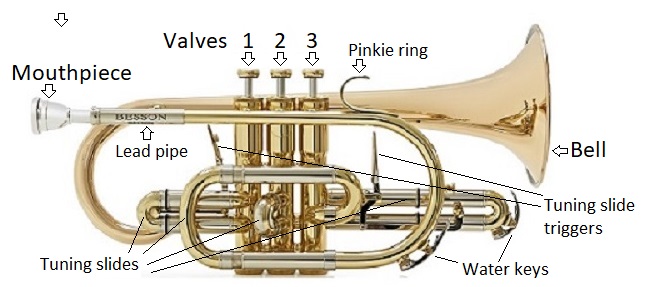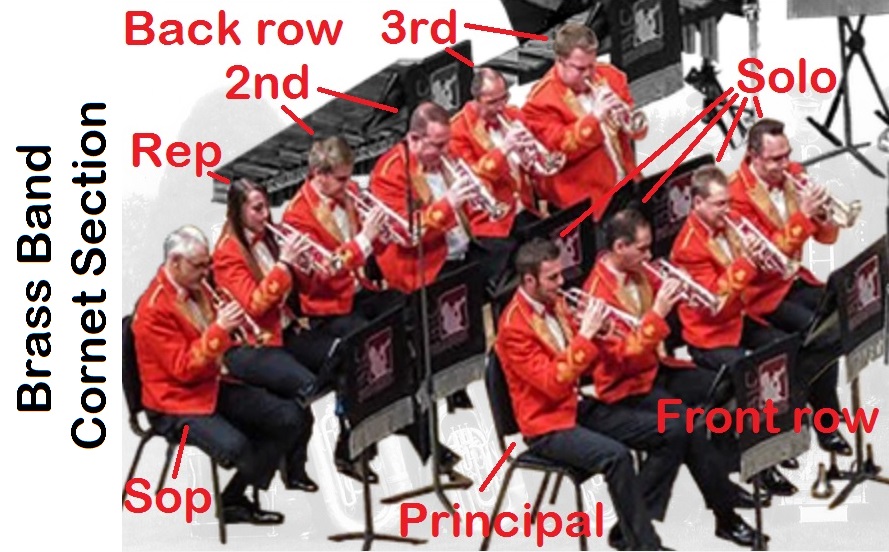
The cornet is a small brass musical instrument, similar to the more familiar trumpet. It was invented in the 1820s in France by adding valves to the post horn, a simple brass instrument that consists of a length of tubing with a cupped mouthpiece at one end and a flared bell at the other.

Like all brass musical instruments, the cornet is played by “buzzing” into the mouthpiece. The pitch of the note depends on how the player buzzes and the length of the tubing. Pressing the valves opens up extra lengths of tubing which increases the total length of the cornet and lowers the pitch of the notes that can be played. By pressing different combinations of valves, a full chromatic range of semitones (corresponding the the white and black keys on a piano) can be played.
Today the cornet is mainly used in traditional brass bands, where you will find up to 10 of them! They are the highest pitched instruments in a brass band and they play a lot of the melody and higher harmonies in the band.

A brass band has a Principal Cornet player who leads the cornet section, plays many of the solo parts, and may also help to encourage and develop the other cornet players. Then there are 3 other “Solo” or “Front row” Cornet players, and behind these sit the “Back row” Cornet players: 2 “Second” Cornets and 2 “Third” Cornets, who play accompanying harmonic parts; a “Repriano” Cornet (or “Rep”) player whose role is to fill out the harmony and support the other cornet parts, and a Soprano Cornet (or “Sop”).
The cornet is very similar to the trumpet. It has the same length of tubing (a bit less than 1.5 metres or 5 feet without any valves pressed), and plays the same range of notes. The difference is in the shape of the instrument, with the cornet being more compact. The tubing of a trumpet is the same width or diameter all along its length (cylindrical) until the bell, whereas the cornet tubing gets slowly wider along its length (conical).


Also, a cornet mouthpiece is deeper and more V shaped than the trumpet mouthpiece which has a shallow bowl shape.
These differences give the cornet a warm, mellow tone in contrast to the trumpet’s lively, brash tone. The cornet fits well in a brass band where it blends with the other brass instruments, whereas the trumpet is used in orchestras and other bands to give contrast and stand out above the other instruments.
The standard cornet is also called the B♭ (“B flat”) Cornet to distinguish it from the Soprano or E♭ (“E flat”) Cornet. It is called the “B♭” Cornet because when the player plays a note written as a C, it will have the same pitch (sound like the same note) as a B♭ played on the piano (“Concert B♭”). When an E♭ Cornet player plays a note written as C it will have the same pitch as an E♭ played on the piano (“Concert E♭”).
With the exception of percussion, bass trombone and some older tenor trombone music, all parts in a brass band are transposing and written in the treble clef with the instrument’s lowest open note (Concert B♭ or E♭) notated as middle C. This means that for every valved instrument, from the basses to the soprano cornet, a given note on the stave corresponds to the same valve fingering, enabling players to move more easily between parts.